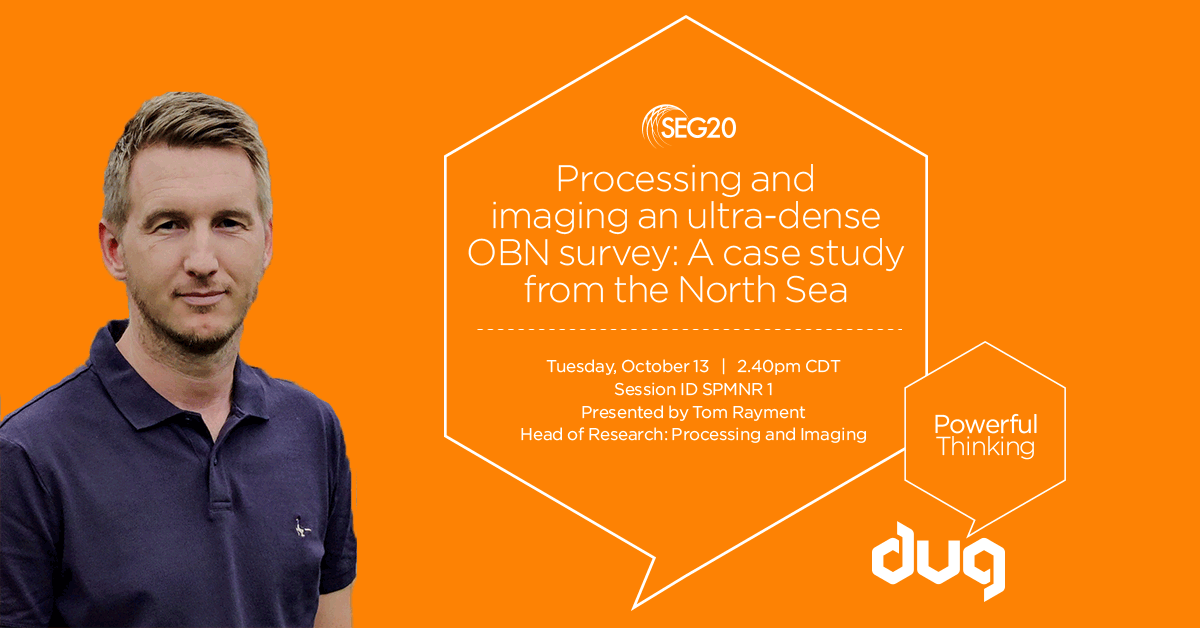In a first for its 90 year history the SEG Annual Conference is now open as an all-virtual event. SEG20 is still bringing you the same cutting-edge technical content, but this year you can enjoy it from the comfort of your home or office.
We’re proud to be a platinum sponsor of the event, and to be featuring some of our latest results and new technologies in the technical programme.
Don’t miss Tom Rayment’s presentation titled “Processing and Imaging an ultra-dense OBN survey: a case study from the North Sea.” You can catch it live on the SEG20 meeting platform at 2.40pm CDT on Tuesday October 13. Plus it will be available for viewing with your SEG registration any time until November 13.
A summary of Tom’s presentation, as described in the paper authored by Tom Rayment*, Gary Hampson and Laurence Letki, is as follows:
We describe the processing and imaging of a multi-petabyte blended OBN survey from the central North Sea. The primary target was at the Base Cretaceous Unconformity level with numerous processing and imaging challenges such as shallow channels, gas and injectites with complex geometries and varying velocities as well as lateral variations below the high-velocity chalk layer due to thickness variations and faults. In addition, there are substantial peg-leg multiples and very strong seismic interference.
A state-of-the-art deblending algorithm not only enabled the efficient and cost-effective acquisition of high-density OBN data but additionally allowed us to successfully separate the strong seismic interference. This, in turn, provided a data set suitable for the application of U/D and D/D deconvolution (Hampson and Szumski, 2020) that resulted in images free from multiple contamination. High fold, rich-azimuthal coverage and high-quality low-frequency information provided a clearer image of various targets than had previously been achieved. These attributes also allowed FWI to resolve the complex shallow channels systems that resulted in improved deeper imaging.
These results highlight the importance of a tailored, efficient, geophysical approach to data analysis and processing. The results of this multi-petabyte OBN survey provide a high-fidelity, high-resolution image of the subsurface that will help reduce the risk of structural complexity at target level.
A presentation not to be missed!




































